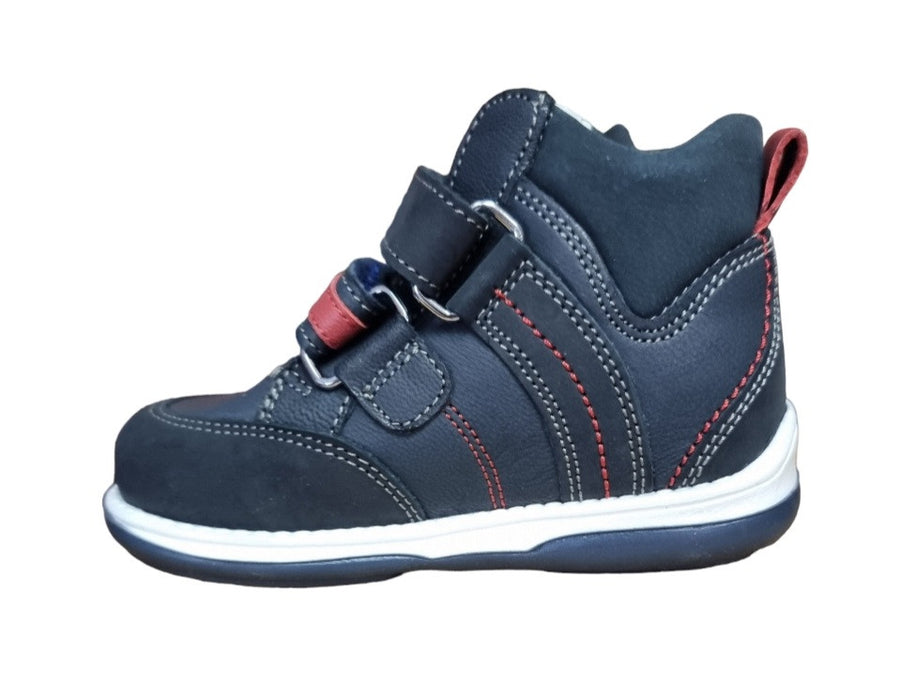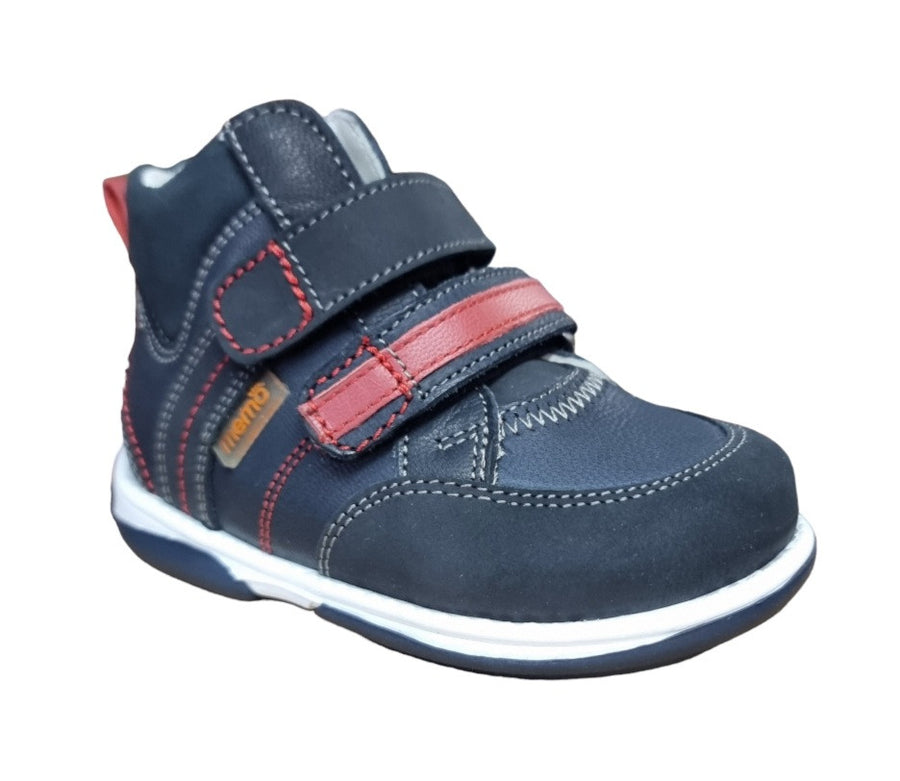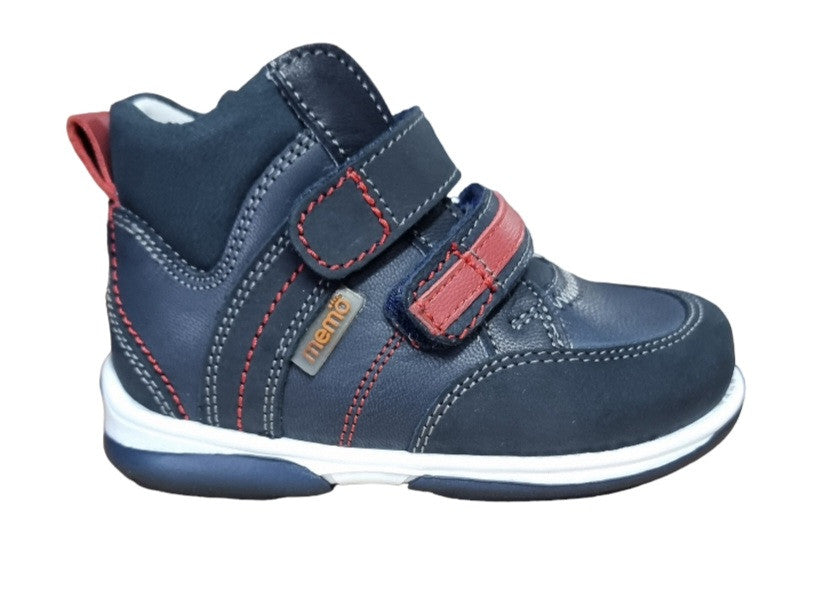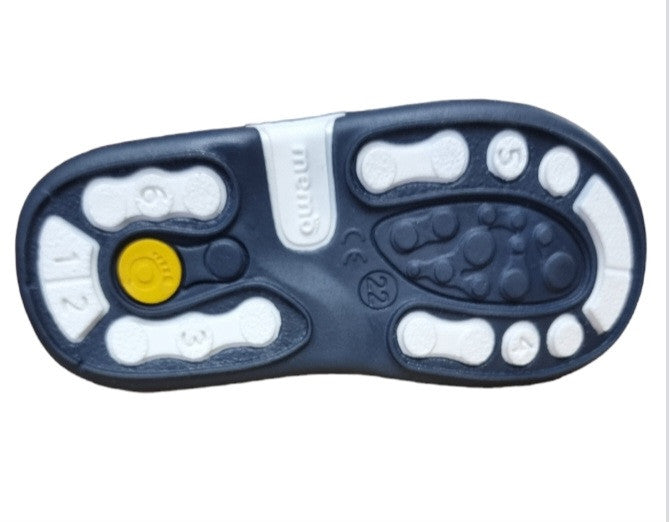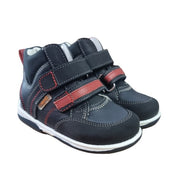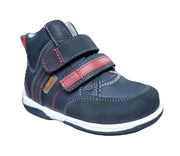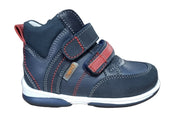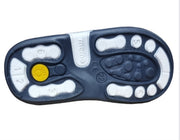MEMO boys Toddlers + Junior leather boots /diagnostic sole /colour Navy blue -red, POLO JUNIOR 3DA
€108,00
-
Memo shoes with a high-cut upper that have prophylactic properties – the Thomas heel, a stiffened thermoformable heel, the diagnostic Memo sole. A stylish combination of natural leather and decorative details.
Performance characteristics of the product
Memo’s diagnostics area is its outsole and heel. They are divided into six numbered zones with cambered stripes. After wearing Memo shoes it is possible to access the degree of stripes abrasion. Insoles can be selected to correct the problem depending on which zone is worn. This abrasion can also be very valuable information for your Doctor, Consultant or Physiotherapist. After a correct insole is selected it is advised that the child should wear the Memo shoes as often as possible. The period of use for Memo depends on the child’s age and the intensity of the problem.
Diagnostic sole zones - the level/presence of clash of diagnostic elements
- Zone 1 - Abrasion in zone 1 means healthy feet. In this situation, Memo shoes act preventively.
- Zone 2 - Abrasion in zone 2 indicates using grey insoles and wearing Memo shoes. When wearing grey insoles abrasion continues in zone 2 then use an orange insole. If the abrasion area continues to be incorrect please consult your doctor.
- Zone 3 - Abrasion in zone 3 indicates using orange insoles and wearing Memo shoes. If inappropriate abrasion continues consult your doctor.
- Zone 4 - Abrasion in zone 4 indicates to use of orange insoles and wearing Memo shoes continuously. It is also recommended to seek medical advice as further intervention may be required.
- Zone 5 and 6 - If abrasion occurs in zone 5 and/or 6 seek medical advice.
Intended use
The need for stabilization and correction in the following basic diseases and diagnostics of the following diseases:
- length asymmetry of lower limbs,
- asymmetry of the feet,
- other biomechanical disorders of the hip joints,
- knee and ankle joints requiring correction/stabilization.
Usage
- Footwear should be put on and removed without lacing.
- Avoidgettingyourshoes In case of heavy soaking, the shoes should not be dried in the immediate vicinity of devices that emit heat. The shoes should be unlaced before drying. Inserting the paper inside the footwear will avoid the deformation of the shape.
- Footwear made of nubuck and velour leather


